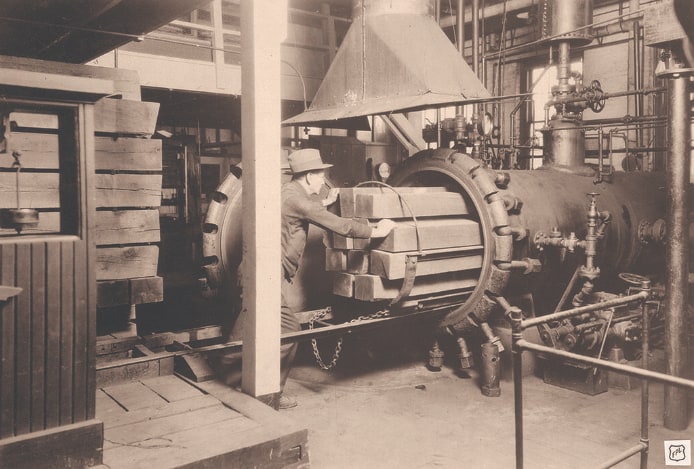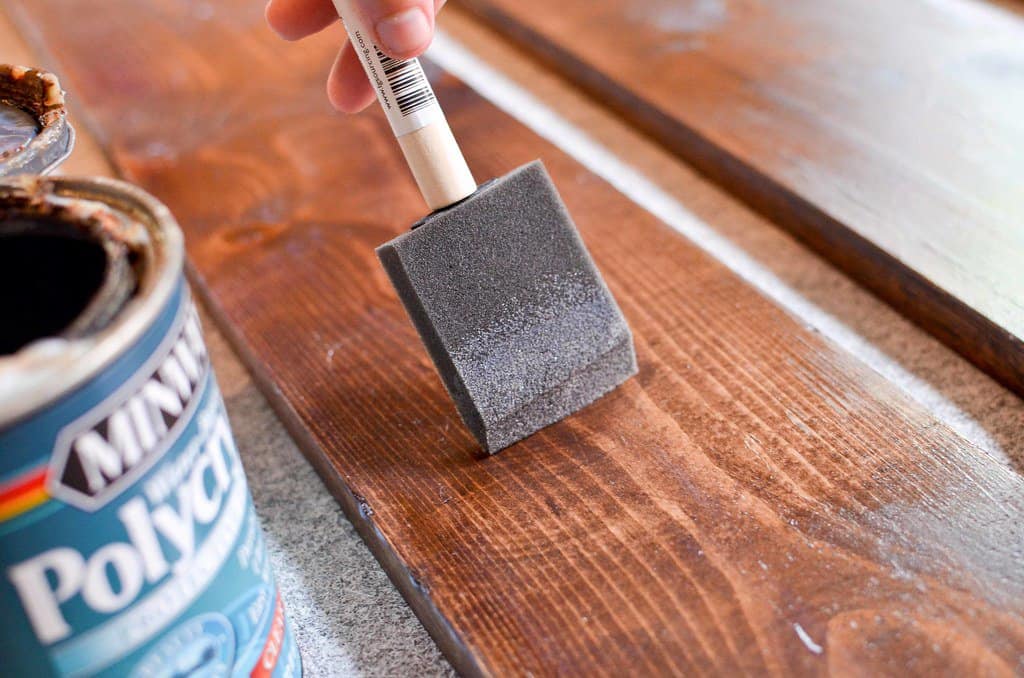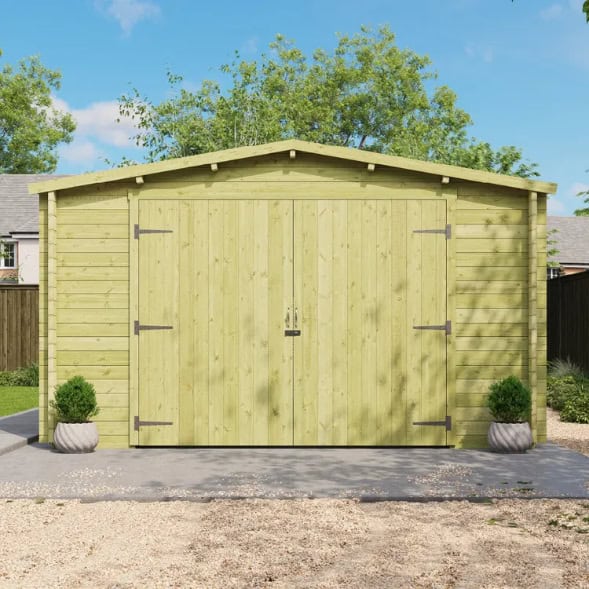Jump to:
You’ve probably heard the terms ‘pressure treated’ or ‘pressure treatment’ before. Basically, it’s a way to protect wooden garden buildings like:
In this guide, we’ll explain what it is and what it means for your wood by answering the common questions.
How Pressure Treatment Protects Wood?

Wood, a natural material, is inherently vulnerable to rot, decay, and structural changes. While it remains part of a tree, it’s resilient due to the tree’s rooted stability. However, once transformed into planks, wood becomes susceptible to warping or bowing. This phenomenon is noticeable in everyday wooden items if they absorb water.
Wet wood attracts insects and bugs, especially woodlice. These pesky little creatures thrive in the damp, dark conditions.
Wooden items, especially those meant to stay outdoors, are coated in preservatives to make the timber resistant to rot, decay, and insect damage. Pressure treatment is a longer-term version of this, soaking chemicals deep into the wood fibres at the manufacturing stage. It preserves the wood to keep the structure in good shape for years.
What Does Copper Do in Pressure Treatment?
Copper has changed how pressure treatment works since the mid-2000s. This metal not only stops fungi and microbes from growing, but also blocks mould and mildew.
It works by interfering with enzymes, fats, and proteins in these organisms. This makes the wood unpleasant for pests like termites, in turn. It also means less maintenance and fewer repairs for your garden building.
How Is Pressure Treatment Different from Using Wood Preservers?

Pressure treatment is done in a factory and often handled by the manufacturer. The wood is cut, dried, and placed in a sealed steel cylinder. A vacuum removes the air, and chemical preservatives are added. The vacuum then extracts any excess liquid. Inside, the material absorbs the preservatives deeply into the grain for thorough treatment.
Wood preservers are sold in tins and applied like paint, and you can apply them yourself. They give some protection, but it won’t last as long or be as thorough as pressure treatment. You also need to apply it at least once a year, vs a protection that lasts for years and that you don’t have to do yourself.
What is Tanalising in Pressure Treatment?
Pressure-treating, also called tanalising, uses a special solution called ‘Tanalith E’. Note that different companies may use different solutions for preserving wood.
The process happens in tall, flat vats where batches of thin planks are bundled. The vats are horizontal for easy access. After sealing, a vacuum removes air, and Tanalith E is poured in.
Another vacuum increases pressure, pushing the solution deep into the wood. This meticulous process ensures chemicals penetrate the wood grain thoroughly. It surpasses the effectiveness of simple paint-on preservers in return.
Overall, tarnalising is the process of fully treating wood using industrial pressure methods.
Why Does a Pressure Treated Garden Room Look Green or Wet?
It appears green or wet due to the copper reacting with the air, and it’s definitely not mouldy. But don’t worry, as this green tint fades back to the natural sandy-brown colour of the wood.

After treatment, the wood requires considerable time to dry thoroughly. At Garden Buildings Direct, a vacuum wrap is occasionally applied before complete drying. This leads to a misconception of rotting upon delivery. However, the green or wet appearance actually enhances the wood’s weather resilience.
For reference, take a look at BillyOh Aston Wooden Garage. It comes as pressure treated as standard, hence the greenish tint panels. The wood has been treated in a pressurised tank with chemical preservatives. This gives you a longer-lasting investment.
Can you paint a pressure treated garden building?
Can I paint a pressure-treated shed? Yes, you can paint or stain one to customise its appearance beyond the natural colouring. However, a crucial consideration is the moisture content within the wood.
Make sure the wood is completely dry before painting. If the wood is damp, oil-based paints won’t stick well, and water-based paints won’t absorb due to moisture. Additionally, painting can leave moisture trapped underneath and unable to dry, eventually causing the mould issues that the pressure treatment is intended to prevent. Allowing the wood to dry thoroughly ensures the paint adheres properly. Most importantly, this will result in a durable and visually pleasing finish.
More information here: Painting Pressure Treated Wood – How to Do it Right
Round-up
This guide shows how pressure treatment helps protect your garden buildings. Most of our products come with it as standard – click the buttons below for each category. You can see the option on the ‘Select Treatment’ section of your chosen product’s page.






